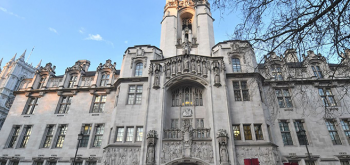The House of Lords’ constitution committee today published a report calling for ‘a more diverse judiciary’ to ‘improve public trust and confidence’ including the possibility for targets for female and ethnic minority judges .
- You can read the report HERE
According to the report in 2011 only a small minority (5%) of judges were Black Asian and Minority Ethnic (BAME) and less than one in five (22%) were women. The committee made a number of recommendations to improve diversity:
- The Lord Chancellor and Lord Chief Justice should have a duty to encourage diversity amongst the judiciary;
- Supporting the Equalities Act 2010, section 159 to ‘allow the desire to encourage diversity to be a relevant factor where two candidates are found to be of equal merit’;
- Promoting opportunities for flexible working and the taking of career breaks;
- Greater commitment on the part of the Government, the judiciary and the legal professions to encourage applications for the judiciary from lawyers other than barristers; and
- While the Committee did not ‘currently support the introduction of targets for the number of BAME and women judges’, it said this should be ‘looked at again in five years if significant progress has not been made’.
The Committee ruled out US-style pre or post-appointment parliamentary hearings. It also recommended that the retirement age for the most senior judges (Court of Appeal and the Supreme Court) should be raised to 75 to ‘prevent a loss of talent in the highest courts whilst allowing more time for women and others who have not followed a traditional career path to reach the highest levels of the judiciary’. The retirement age for all other judges should continue to be 70.
‘It is vital that the public have confidence in our judiciary,’ commented Baroness Jay, chairman of the committee. One aspect of ensuring that confidence is a more diverse judiciary that more fully reflects the wider population. That even by 2011 only 5% of judges were from minority groups and only 22% were women suggest there is still work to be done in this area.’
It is important that judges are appointed on merit but the Committee felt there are steps that could be taken to promote diversity without undermining that principle. Requiring the Lord Chancellor and Lord Chief Justice to encourage diversity and supporting flexible working within the judiciary would be a good start. It is also important that solicitors, who are a more representative group of society than barristers, do not face any impediments to a career in the judiciary.
We also looked at the important principle of judicial independence from political interference. Here the Committee felt that neither the Lord Chancellor nor Parliament should be given enhanced powers to decide who becomes a judge. The respective roles of politicians and judges are distinct and it is important they are kept separate. The Constitutional Reform Act 2005 created an open, transparent and independent appointments process. As the Constitution Committee, we believe that the independence of the process should be preserved.”






